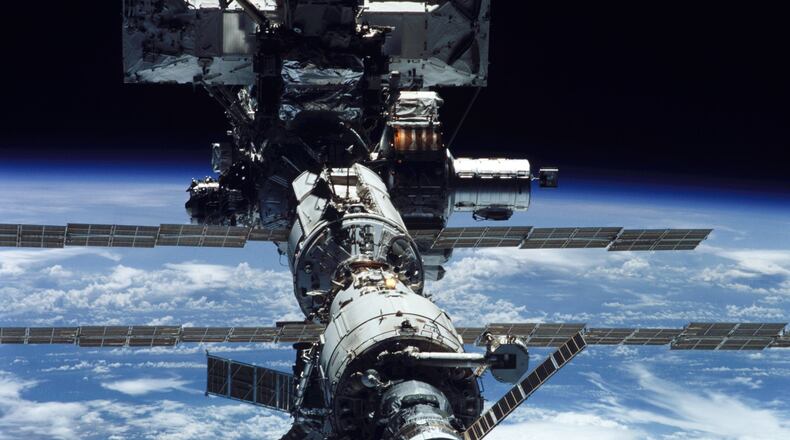Obviously, my plan to become an astronaut didn’t pan out, but that doesn’t mean my love of space faded away. I have vivid memories of going to the Kennedy Space Center in Cape Canaveral, Florida as a child. My family and I visited a few days before a launch. I remember seeing one of the rockets already out on the launch pad and was stunned by its size.
Thankfully, with new satellite technology images of space can be captured and sent back to earth for viewing. One of my favorite photos from space is of our planet. Of course, I’m partial because of the weather aspect, but to see the beauty Earth from the outside is quite special.
Most nights I take my dog for a walk and find myself gazing up at the stars. I may not know a lot of constellations, but it’s neat to point them out when I do. Last summer my family was impressed when I called out three planets in the sky while out for a late evening walk on the beach.
Have you ever seen a shooting start or the International Space Station flyover? There’s nothing like it. Perhaps my favorite astronomical events have been watching a lunar and partial solar eclipse. These moments are ingrained in my memory, including where I was and when they happened.
Seeing a shooting star may seem random, but most of the time you can plan ahead and increase your chances of spotting one. Right now the Eta Aquarid Meteor Shower is active. While it peaked on May 5th, meteors may still be visible at times through the end of the month.
As for planets in the sky, Jupiter, Saturn, Venus, and Mars are all visible through the month of May. Mars appears around nightfall and can be seen all month long. Jupiter rises in the mid-evening hours following the planet Saturn which also rises every night in the southern sky. Venus is the brightest planet in the sky and can be spotted in the early morning hours before dawn in the eastern sky.
As for the next good time to see the Space Station flyover, May 17th would be your best chance. The station will appear in the southwestern sky around 10:17 p.m. and be visible for about 6 minutes as it travels towards the northeastern sky before disappearing. At its peak height in the sky, it will reach roughly 54 degrees above the horizon, making it a high enough to be seen over distant trees.
If you would like to learn more about what’s happening in the sky, visit the Skywitness7 page on whio.com.
About the Author
